Weekend project: dog sitter with robot dog!
Last weekend, I was on dog-sitter duty for my brother’s dogs. It’s always a delight to have those two rascals over!
While discussing the schedule for taking care of them with my partner, I got the idea to program my robot-dog companion as a fun project to tease my dog nephews. (to be that cool uncle).
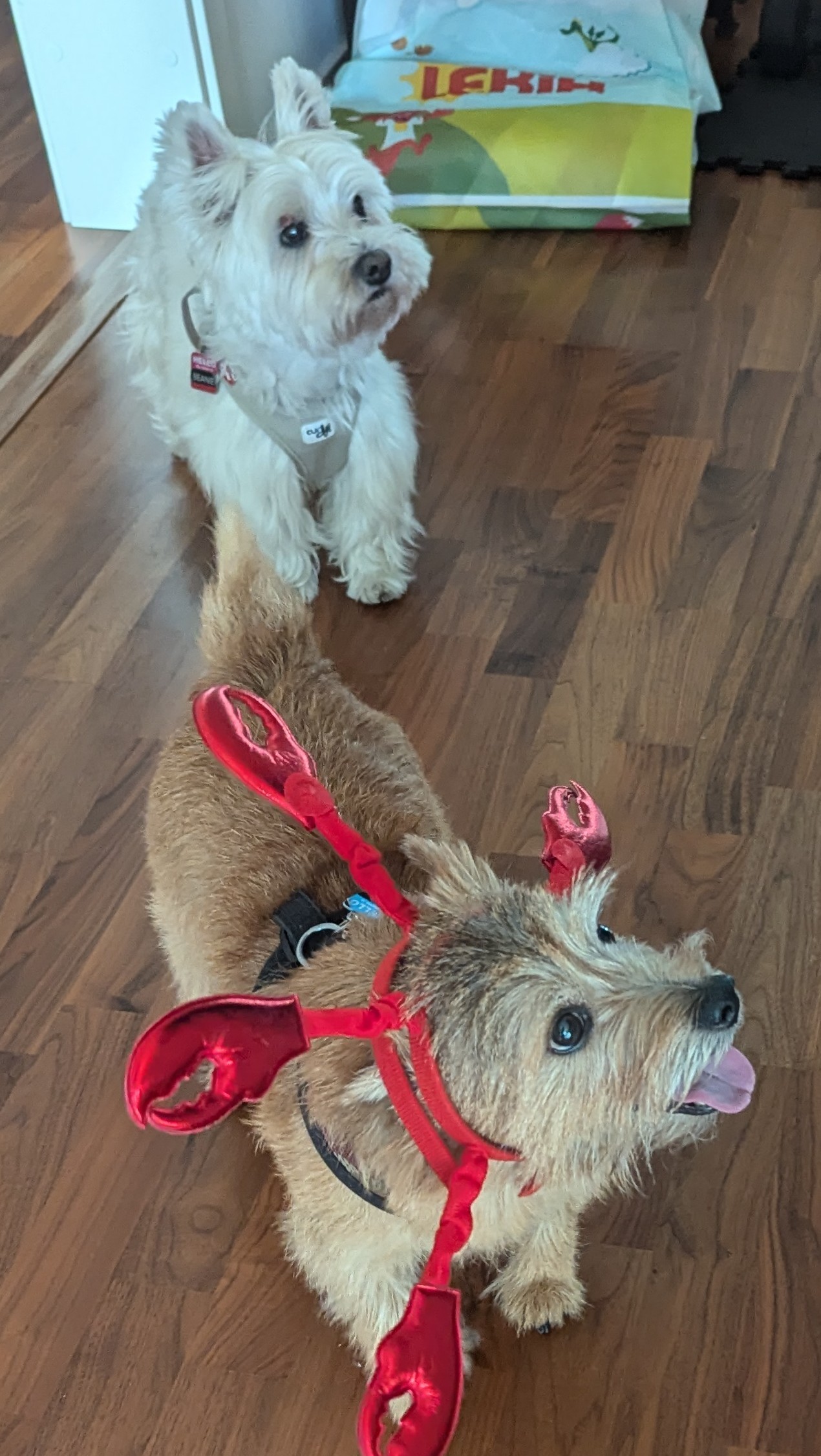
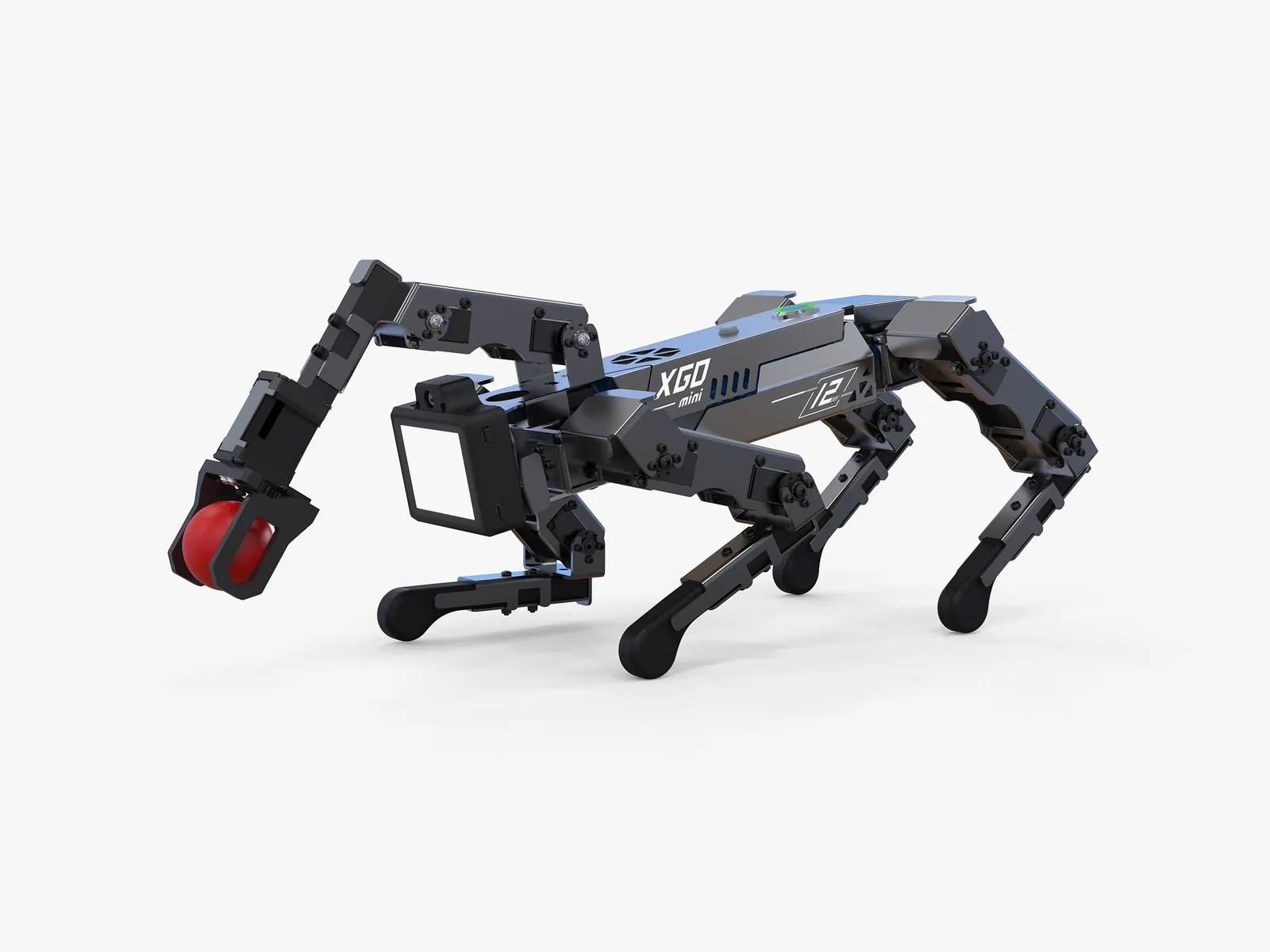
my brothers dog dressed up for crayfish party & xgo mini2, a hobby quadruped with a robot arm
The year before, I was part of funding the Kickstarter project for a mini quadruped robot called Xgo mini after hearing about it in a Sentdex’s video. Although I got the robot, it had been lying around for a year or two. Even after getting the version 2 with an arm, I never got to actually play with it because I was busy working on stuff at work.
I’ve been in the process of studying the MIT course Underactuated Robotics by Professor Russ Tedrake, after FOMO feeling the need to familiarize myself a bit more with motion planning(Trajectory Optimization), control & simulators now that my work was becoming more around RL/IL & other Machine Learning applied to robotics. Most of that effort has been confined to the Drake simulator and using trajectory optimization (to not break the robot), so not applicable to this.
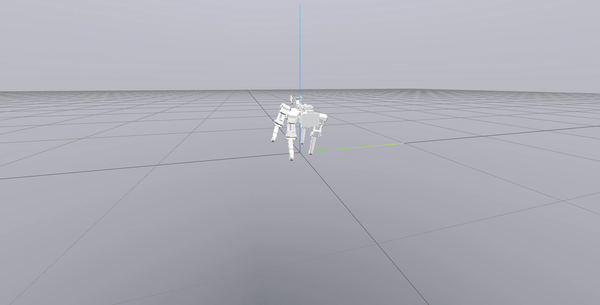 Don’t mind the wonky arm. The simulator is treating it as a free joint that bounces back&forth with a pretty major contact force bounce! Not simulators fault, but my setting and urdf file
Don’t mind the wonky arm. The simulator is treating it as a free joint that bounces back&forth with a pretty major contact force bounce! Not simulators fault, but my setting and urdf file
Since version 2 is made in Raspberry Pi, I thought it would probably be an easier platform to just crank up a project from scratch. But Robotics 101 says the devil is always in the details and even simple solutions with simple moving parts fail, something I should be well aware of. Anyway, I just coded up something simple: using python & ZMQ for remote-control fun, then openCV + YoloFast with onnxruntime for detecting the dogs & some simple state-machine for chasing them and getting their attention. I didn’t want to get boggled down in control algorithms for now, so I went with some built-in gate-control libraries.
*No dog was harmed in the process of making this project! Dog uncle cares about his dog-nephews =)
It worked well for a weekend project, with less than a day spent on it. I had fun scaring playing around with the two dogs. Controlling it from the robot’s POV was very fun, even if some noticeable delay was introduced with distance since I was just using my phone as a wifi router. The Automation part, predictably, didn’t go as well. (one or two successes that I forgot to record…) The simple logic (pseudo code, simplification of simplification):
if dog is not found:
cry() # get dogs attention
found = search_dog() # simple search heuristic
elif dog is found:
chase_dog() # simple motion based on matching the detected bounding box
elif dog is close_by:
interact_with_dog() # do some funny stuff
broke in a very predictable (and funny) way.
The predictable faults:
The detection quality was low. One of the remedies would’ve been to increase the image quality, such as increasing the camera auto-exposure. (the lightning condition at floor level wasn’t ideal) Very quick testing did show that the angle matter and the POV from below the dogs often confused the detector.
The time synchronization issues that make you appreciate the robotics middleware such as ROS that simplifies all of this ;)
The heuristic of search_dog could’ve been improved. Motion causes blur in the image, which drops the detection quality! Standing still while using object detection was the obvious simplification but when the system has small delays caused by: camera capture, socket communication, detection inference, and motion command delays, it accumulates to instability relatively quickly.
Dogs are moving (duh!) chase_dog() although continuously updating the position of the detected dogs, didn’t really take into account the time delays between detection & also motion commands. An obvious solution was using simple state estimation (Kalman filter etc) for the current robot pose/velocity, and also for tracking the dog position & velocity, and using filtering for outliers.
Enough about the faults, now about the funny faults.
Funny faults:
There are two dogs. Post-processing detection needs to take this into account, but YoloFast uses nonmax suppression for post-processing the bounding boxes, which means that when the dogs are close to each other, it often detects each dog at different frames! It’s a problem I solved before at work a long time ago, by estimating object states and using that together with assignment problem algorithms (such as The Hungarian algorithm, modified). Relatively simple with very little overhead. (TODO comment somewhere in the code)
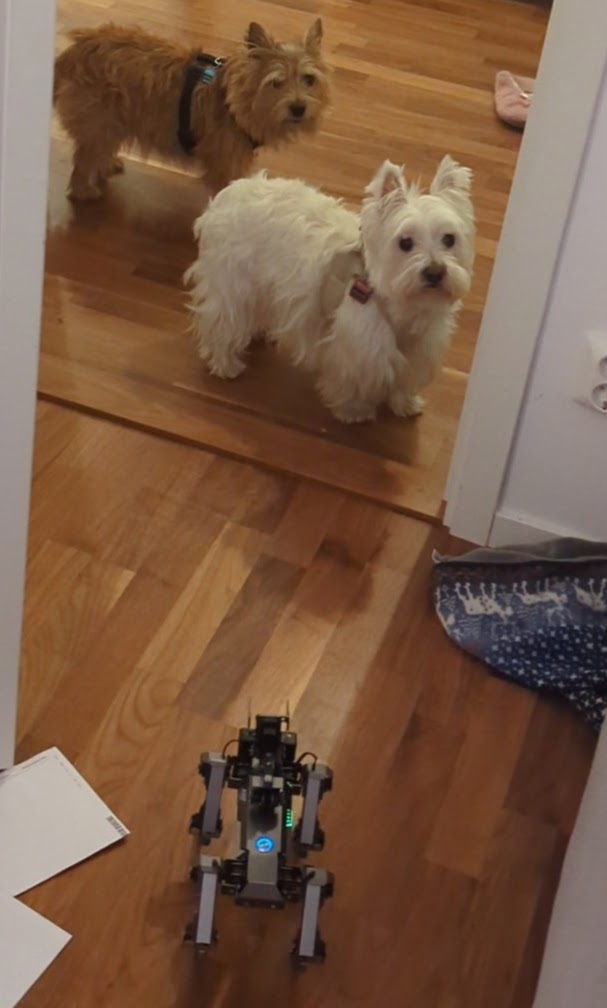 They’re judging my effort….
They’re judging my effort….
Mirrors. One part of my apartment has mirrors as a wall. While walking there, the robot detects itself as a dog! Which made it just chase itself! The simple solution was to not deploy it close to the mirrors. But yes, my robot dog failed the mirror test.

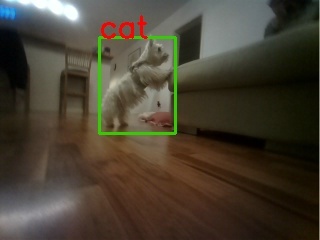
The machine thinks it's a dog.... but thinks the dog is a cat.
Test time affects deployment. Now this is specific to dogs. While working on it, I realized that version two XGO quadruped came with a microphone. So I went and downloaded some funny short sound clips such as dog toys squeaking, barking, or dog crying. I thought this would dramatically simplify the problem by making the dogs come to the robot, rather than the other way around. And initially, testing it, it worked! Caveat: dogs got used to it after about 5 tests, and started to ignore it. So when I finally put everything together it helped very little.
This was just a fun weekend project conducted haphazardly. This project ended up ignoring all the parts about control, (using pre-existing solutions) and skip motion planning.
Even with that, by remote control, the problem is trivially solved. I skipped any proper automation logic implementation because I just wanted to see how simple logic that almost anyone could write, would perform. The fun of working on real-world robotics is always to reexamine things we take for granted. Lightning condition is one. Time delays, multiple objects, tracking, knowing if the legs are stuck or not, slipping and the list can go on.
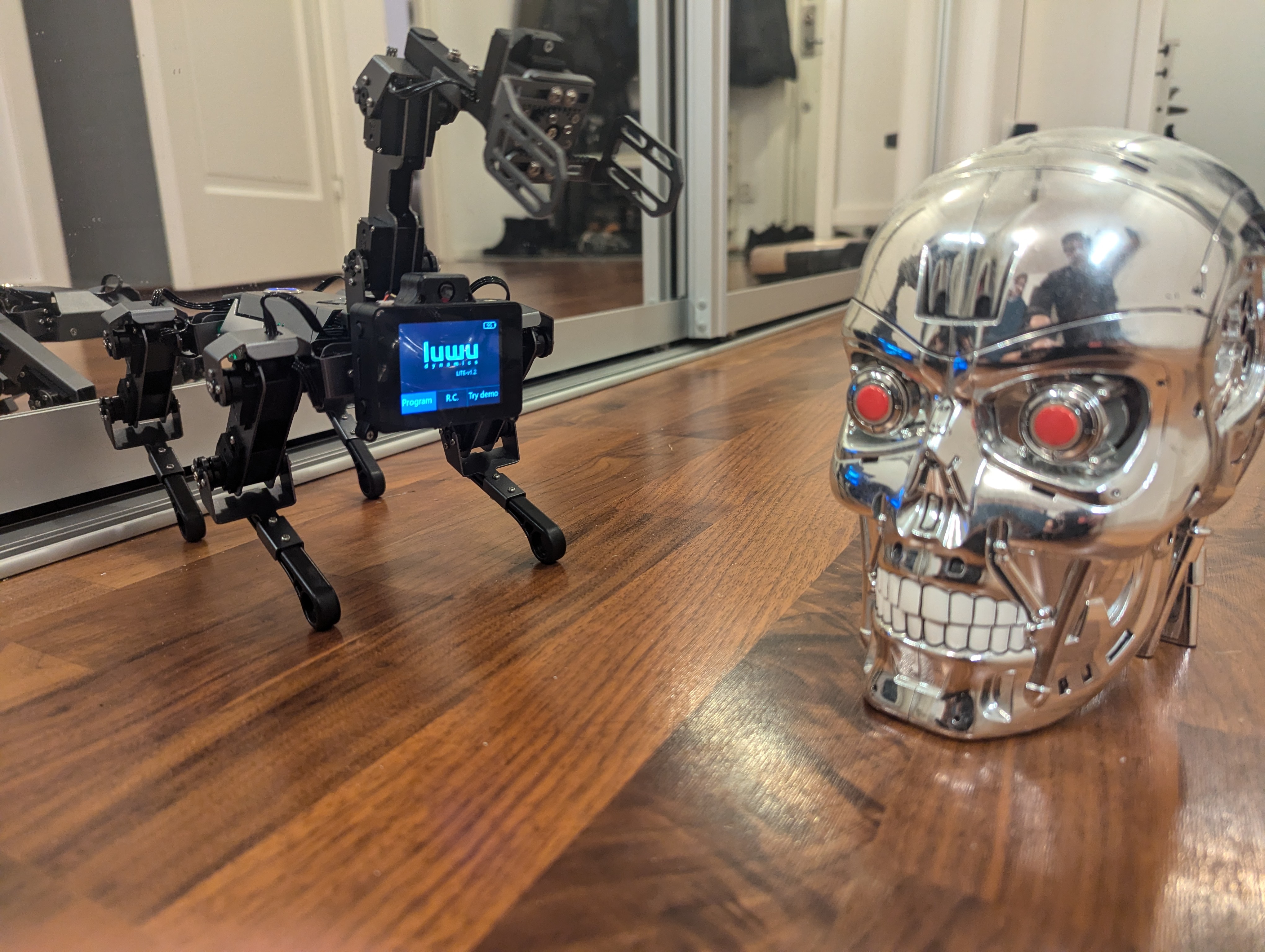
(sidenote: I don’t particularly like the field of Task and Motion Planning (TAMP) but I gotta admit using those principles rather than simple state-machine would’ve probably, even for this project, been easier)